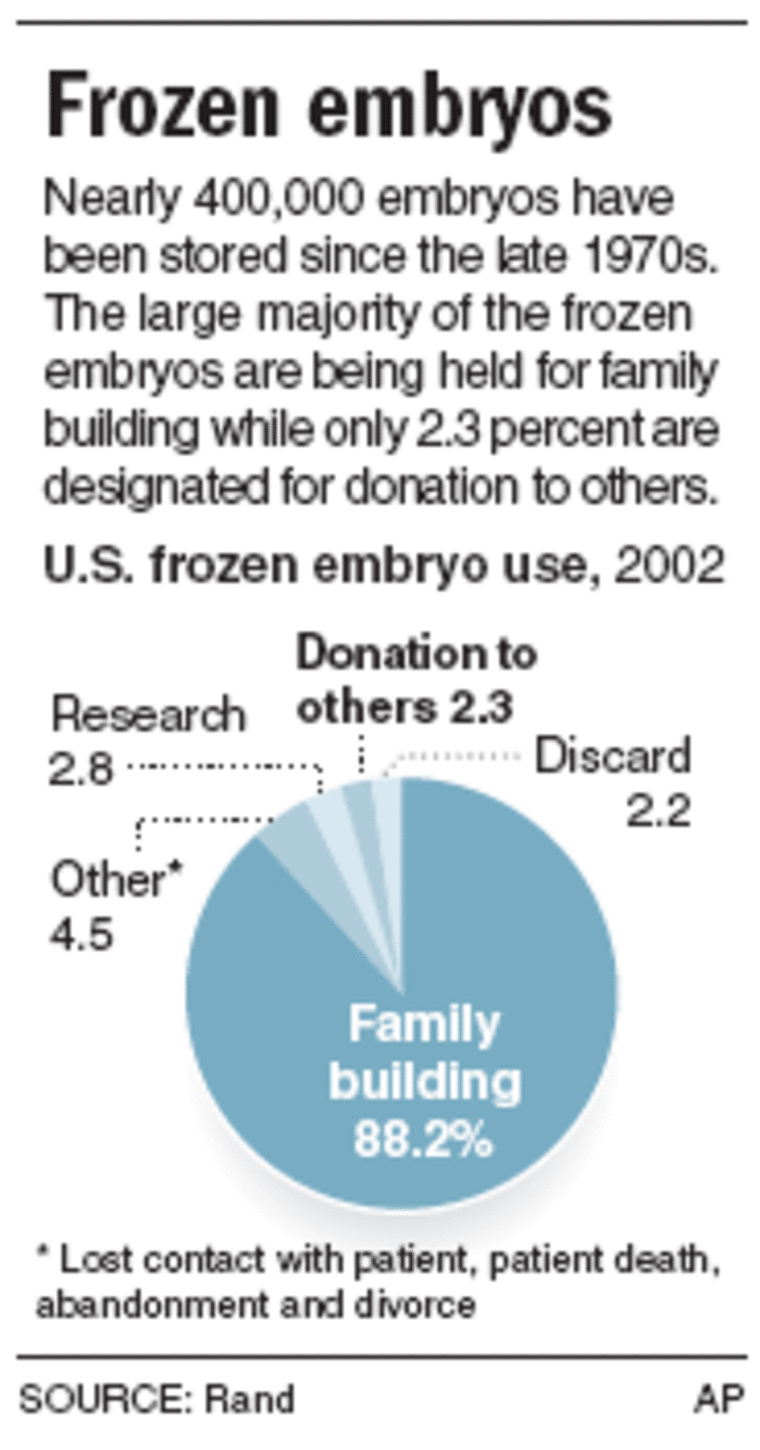Fertility treatments such as in vitro fertilization have exploded in popularity in recent years. But with this "baby boom" comes an unexpected dilemma: what to do with the unused embryos left over from IVF treatments? In this "Today" exclusive, “Today” host Katie Couric talks to a California family who faced this problem, and waited a long time for their newest member to arrive.
She’s still too small to walk, but five-month-old Laina has been more than 13 years in the making. "She's just an incredible miracle — just the whole journey that I went through to get to the point that a baby actually came out of all this,” says Laina’s mother, Debi Beasley.
For Debi and Kent Beasley, the journey began back in 1992, when they had twins through in vitro fertilization.
At that time, extra embryos were created, and then frozen for storage.
One of those embryos would eventually become Laina. Technically, that makes her a tiny triplet of her older siblings Jeff and Carleigh.
But before Laina could enter the world, her parents had to overcome a series of devastating obstacles.

Debi's doctor was caught selling eggs on the black market, and several of her embryos were misplaced. “That was really devastating and it just took us some time to come to terms with that emotionally,” says Debi.
Years later, the Beasleys tried again to have a baby through in vitro. But then Debi nearly died from an allergic reaction to fertility drugs. "I was so sick all of the time. I used to wake up at night and I would just, there were times that I just wanted to give up," she says.
Despite her illness, Debi says she kept thinking about her last remaining embryos. "I went to my husband and said, 'Okay, I really feel it in my heart, and I’m really feeling that God is saying that it's time.' "
Between them, Debi and Kent already had five children and the family worried about her health. Kent says, “It had been a long time. I didn’t know if I was ready to do this again.” But Debi told him it was really in her heart to do this. “I couldn't in good conscience say no,” he says.
This time, the embryo transfer had to be all-natural, no drugs, making success even less likely.
“It's really a miracle, besides the length of time that the embryo was frozen, that this actually worked,” says Dr. Steven Katz, Debi's physician.
Laina is living proof that embryos can last longer than anyone had thought, which raises new questions about the limits of reproductive technology — and brings fresh hope to couples waiting for a little miracle of their own.